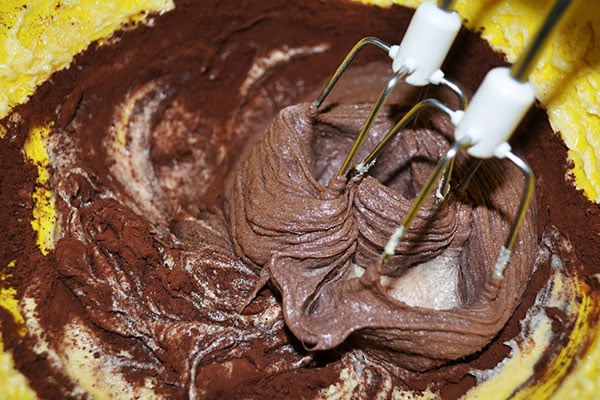[Food Additives] 8 Types of Magnesium and their Applications in Food
Posted on by
 Magnesium is a mineral that is necessary for good health.
Magnesium is a mineral that is necessary for good health.
It’s important for many functions in the body including, regulating muscle and nerve function, blood sugar levels and blood pressure, as well as energy production and bone health.
In addition to its role in several bodily functions, magnesium has important roles as a food additive.
This article highlights eight types of magnesium, and their various applications and functions as a food additive.
1. Magnesium Carbonate
Magnesium carbonate, also known as magnesite, is a naturally occurring mineral. It’s practically insoluble in water and insoluble in alcohol.
It’s produced by mixing magnesium and carbonate ions under an atmosphere of carbon dioxide.1
Magnesium carbonate is widely used as a food additive to prevent caking and as a whitener in food processing applications.
It’s is also used as a demolding agent in the manufacturing of biscuits, as a carbonate source in soft drinks, as well as a source of magnesium in dietary supplements.
2. Magnesium Chloride
Magnesium chloride is a natural mineral salt that is commercially produced from sea water following the removal of sodium chloride and water.
Unlike other forms of magnesium, magnesium chloride is easily soluble in water. It’s an important coagulant, used in the preparation of tofu, soy, beverages and baby formula milk.
Magnesium chloride is also used as a flavoring agent in the brewing of beer, and for color retention in foods.2
3. Magnesium Hydroxide
Magnesium hydroxide is commercially produced by the metathesis reaction between magnesium salts and sodium, potassium or ammonium hydroxide. It’s insoluble in alcohol with a low solubility in water.3
Milk of Magnesia is a brand name for magnesium hydroxide, a product used to treat upset stomach and constipation.
Magnesium hydroxide is widely used as an antacid, laxative and pH regulator in the food processing industry.
4. Magnesium Oxide
Magnesium oxide, commonly known as magnesia, is produced by burning a magnesium ribbon, which oxidizes in a white flame and leaves behind a white powder. It’s insoluble in alcohol and slightly soluble in water.4
It’s used to regulate pH and prevent caking in bakery products, frozen dairy, canned peas, butter and cocoa products.
Magnesium oxide is also a popular supplemental source of magnesium.
5. Magnesium Phosphate
Magnesium phosphate is made by partial neutralization of phosphoric acid with magnesium oxide. It’s slightly soluble in water and insoluble in alcohol.
It exists in several forms including, monomagnesium phosphate, dimagnesium phosphate and trimagnesium phosphate.5
Magnesium phosphate is used as an emulsifier and anticaking agent, and as a mineral fortifier in functional foods and supplements.
6. Magnesium Silicate
Magnesium silicate, commonly known as “talc” when hydrated, is a compound of magnesium oxide and silicon dioxide.
Talcum powder is made from talc, which is useful for keeping skin dry and helping to prevent rashes. Owing to its ability to absorb water, it’s mainly used as a binder and bulking ageing in cosmetics and personal care products.
It’s unclear whether consumer products containing talcum products increase cancer risk as studies have produced mixed findings.6
Magnesium silicate, however, is generally recognized as safe when it’s used as an anti-caking agent in table salt in accordance with good manufacturing practice.7
7. Magnesium Stearate
Magnesium stearate is a salt of stearic acid, a natural saturated fatty acid. It’s solid at room temperature and insoluble in alcohol and water.8
It’s used as an anti-caking agent, emulsifier, stabilizer and releasing agent in many food supplements, baby formula, bakery products, artificial sweeteners and confectionary.
Magnesium stearate is also commonly used as an inactive ingredient in the production of pharmaceutical tablets, capsules and powders.
8. Magnesium Sulfate
Magnesium sulfate, more commonly known as Epsom salts, is prepared from magnesium salts and sulfuric acid.9
It’s found in foods such as flour, cheese and confectionary. As a food additive, it’s used to enhance the firmness of canned vegetables.
Magnesium sulfate is also used as a brewing salt in beer production to enhance enzymatic activity or promote a desired flavor profile in beer.
References
- Electronic Code of Federal Regulations. Title 21: Food and Drugs. 184.1425 Magnesium carbonate.
- Electronic Code of Federal Regulations. Title 21: Food and Drugs. 184.1426 Magnesium chloride.
- Electronic Code of Federal Regulations. Title 21: Food and Drugs. 184.1428 Magnesium hydroxide.
- Electronic Code of Federal Regulations. Title 21: Food and Drugs. 184.1431 Magnesium oxide.
- Electronic Code of Federal Regulations. Title 21: Food and Drugs. 184.1434 Magnesium phosphate.
- American Cancer Society. Talcum Powder and Cancer.
- Electronic Code of Federal Regulations. Title 21: Food and Drugs. 182.2437 Magnesium silicate.
- Electronic Code of Federal Regulations. Title 21: Food and Drugs. 184.1440 Magnesium stearate.
- Electronic Code of Federal Regulations. Title 21: Food and Drugs. 184.1443 Magnesium sulfate.
Nhận xét
Đăng nhận xét